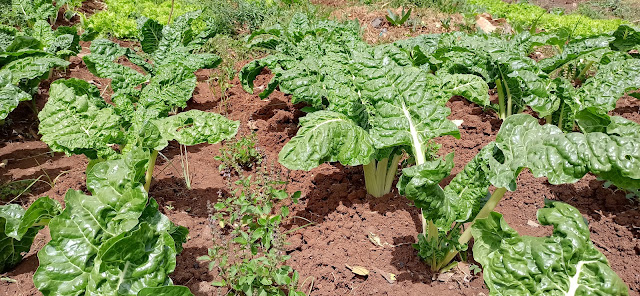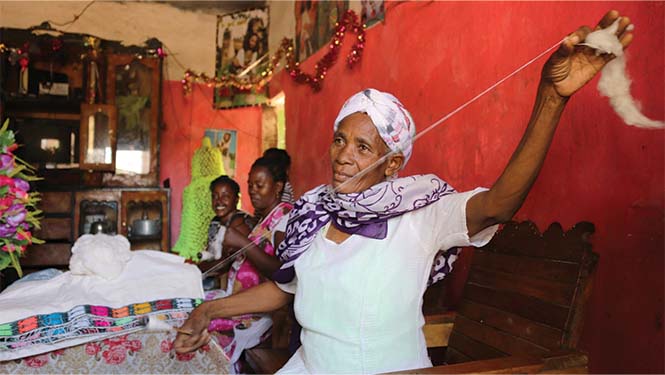Companion planting is the careful placement of vegetables and herbs which have beneficial effects on one another. The plants that we sow/plant together support each other for the best of crop yield. These can be attributed to physical reasons that taller plants provide shelter for plants that need protection. Climbing plants can grow on to taller plants to maximise production in small spaces. Some other plants make good companions because their roots grow at different depths so that they avoid competition for nutrients and water. Other plants increase soil fertility, some others play a significant role in pest and disease control. It is also advisable to consider growing nature; above and below ground when planting vegetables together.
Hence, the table below was prepared to be used as an input when selecting vegetables to plant together as inter-crops. The commonly grown vegetables, their families, edible part (we need to give much care and protection) and their preferred companions are included in the table.
| # | Vegetable/crop type | Family | Edible part | Recommended Spacing: Between rows & Between plants | Can be intercropped with | Remark |
| 1 | Eggplant | Solanaceae | Fruit | · 60-90 cm· 45-60 cm | Beans, spinach, pepper, potato | |
| 2 | Hot pepper | Solanaceae | Fruit | · 60-90 cm· 30-45 cm | Asparagus, Basil, Carrots, Cucumbers, Eggplant, Parsley, Rosemary, Squash, Swiss chard, and tomatoes | |
| 3 | Tomato (determinate) | Solanaceae | Fruit | · Up to 1m· 45-60 cm | Broccoli, Lettuce, Basil, Beans, Carrots, Celery, Garlic, Marigold, Onions, Peppers | Tomato is a sensitive plant when it comes to companion panting. Shallow-rooted crops as opposed to tomato and those that can repel pests can best work with it. When planning to do inter-cropping with tomato, consider these vegetables as they can be best companions. Avoid planting tomato alongside Brassicas and dill. Maize may attract tomato pests, and kohlrabi will stunt tomato growth. Potatoes may also spread blight to tomatoes, so keep them apart. |
| 4 | Bell pepper | Solanaceae | Fruit | · 60-90 cm· 30-45 cm | Asparagus, Basil, Carrots, Cucumbers, Eggplant, Parsley, Rosemary, Squash, Swiss chard, and tomatoes | Avoid planning peppers next to beans, brassicas, Fennel |
| 5 | Onions | Amaryllidaceae | Bulb (root) | · 30-45 cm· 5-10 cm | Beetroot, Brassicas, Carrots, Dill, Kohlrabi, Leeks, Lettuce, tomatoes. | Don’t plant onions near asparagus, or peas of any kind. Onions can be used as repellents of pests when planted with other vegetables. It can help to repel the carrot rust fly for example. |
| 6 | Garlic | Amaryllidaceae | Bulb (root) | · 30 cm· 10-15 cm | Beets, Brassicas, Celery, Lettuce, Potatoes, Tomatoes | Because of its sulphur compounds, garlic may help repel whiteflies, Japanese beetles, root maggots, carrot rust fly, and other pests. Garlic, made into a plant extract, or spray, can act as a systemic pesticide, drawing up into the cells of the plants. Avoid planting it near peas or beans of any kind. |
| 7 | Carrot | Umbelliferae | Bulb (root) | · 7 cm · 2-3 cm | Lettuce, Onion, Leek, Peas, Rosemary, Tomatoes, Radish | Dill is not a goof companion of carrot. |
| 8 | Beetroot | Amaranthaceae | Bulb (root) | · 10 cm· 2-3 cm | Kohlrabi, onion, Lettuce, Cabbage families, Dill | Don’t plant it with beans and tomatoes |
| 9 | Swiss Chard | Amaranthaceae | Leaf | · 45-60 cm· 2-5 cm | Beans, Brassicas, and Onions make the best companions for chard. | It can also be planted with vegetables which have deep roots compared to it. Peppers also so good companions for it. |
| 10 | Cabbage | Brassicaceae | Terminal bud | · 60-90 cm· 45-60 cm | Marigolds, Beetroot, Celery, Dill, Onion, Potatoes, Rosemary, Thyme, Lavender, Beans, Peas, Coriander, Lettuce | These vegetables have beneficial effects when planted with tomato – repelling pests, nutrient competition. |
| 11 | Lettuce | Asteraceae | Leaf or terminal bud | · 30-45 cm· 10 cm | Beets, Brassicas, Carrot, Celery, Cucumbers, Dill, Garlic, Onions, Radish, Spinach, Squash | |
| 12 | Cucumber | Cucurbitaceae | Fruit | · 60-90 cm· 45-90 cm | Beans, Brassicas, Celery, Dill, Kohlrabi, Lettuce, Onion, Peas, Radish, and Tomatoes | Avoid planting cucumbers near potatoes. Maize and sunflower can be planted with it as they can act as supports for the cucumber to climb on. |
| 13 | Green beans | Fabaceae | Seed pod | · 45 cm· 10 cm | Carrot, Celery, Cabbage, Peas, Cucumber, Potatoes, Lettuce, Parsley, Eggplant, Marigolds | Beetroot, Fennel, Onion, Garlic, kohlrabi, and sunflowers are not good companions for green beans. |
| 14 | Cauliflower | Brassicaceae | Inflorescence/head | · 90 cm· 60 cm | Beetroot, Celery, Dill, Onion, Potatoes, Rosemary, Thyme, Lavender, Beans, Peas, Marigolds, Lettuce | |
| 15 | Broccoli | Brassicaceae | Florets and leaf | · 60-90 cm· 30-45 cm | Beetroot, Celery, Dill, Onion, Potatoes, Rosemary, Thyme, Lavender, Beans, Peas, Marigolds, Lettuce | |
| 16 | Potato | Solanaceae | · 90 cm· 30-40 cm | Beans, Celery, Garlic, Marigolds, Onions, Peas | Avoid planting potatoes near asparagus, Brassicas, Carrots, Cucumber, Kohlrabi, Melons, Squash, Sunflower | |
| 17 | Radish | Brassicaceae | · 25-40 cm· 3-10 com | Beans, Beetroots, Cucumber, Lettuce, Peas, Spinach, Squash, Tomatoes | Avoid planting near potatoes. | |
| 18 | Spinach | Amaranthaceae | · 35-45 cm· 3 cm | Brassicas, Eggplants, Leeks, Lettuce, Peas, Radish, Onions, Beetroot | Don’t plant spinach near potatoes |



